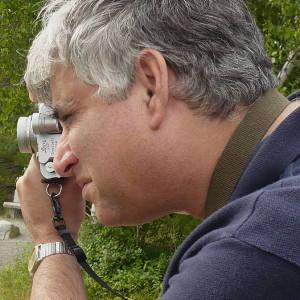Record Honer #161. Leica/Lumix Macro-Elmarit 45mm
During the winter, a woodworking friend referred me to a little book called "Planecraft. Hand Planing by Modern Methods". It was originally published by the Record Tool Company, Ltd. in 1934. Mine is a reprint from 1988. The '30s in the UK and US was a time when accurately machined and adjustable tools were starting to be made by mass production methods, and were replacing the wooden planes used by generations of craftsmen. Planecraft was written as an extended publicity brochure for Record, extolling the virtues of their tools. One of the items mentioned and illustrated is the #161 Honing Guide. It is unique, as far as I know, in that the guide runs across the sharpening stone on a little hardened steel ball, rather than a cylindrical roller. The inference, as is also described in Planecraft, is that the worker would run the edge of the blade across the stone in a series of circles, rather than a linear motion up and down the length of the stone. I have sharpened my cutters with this circular motion for decades now, against all the wisdom of craftsmen with whom I have worked over the years. My thinking was - and is - that, if the stone is not absolutely flat, with a linear motion, one will never be able to achieve an optimal cutting edge on the tool. Whereas, if the stone is dished slightly from use, a circular motion will ride around the lip of the depression, and sharpen efficiently regardless of the stone's condition. I was gratified to see my theory vindicated in Planecraft. Then I had to find a #161! They were in production from the late '50s through the 70s. I found one on eBay last week, and thanks to my Editor's bidding skills, I won the auction. The honer arrived a few days ago. A spot of machine oil got the ball running smoothly on its bearings. The tool has a nice engraving on the top surface indicating the Record name, and advising that a cutter projecting 1 inch from the guide will yield a cutting edge of 30°. Some empirical testing, and some school boy trigonometry confirmed this. As I mentioned in the blurb to my previous Blip, one cannot do first-rate woodwork without accurately sharpened tools. The old-timers sharpen without guides, having learned how to hold their tools at just the right angle. I have seen the results of their efforts: rounded and out-of-square bevels. Honing guides offer accuracy and repeatability, which makes the whole unavoidable process of sharpening more enjoyable.

Comments
Sign in or get an account to comment.


